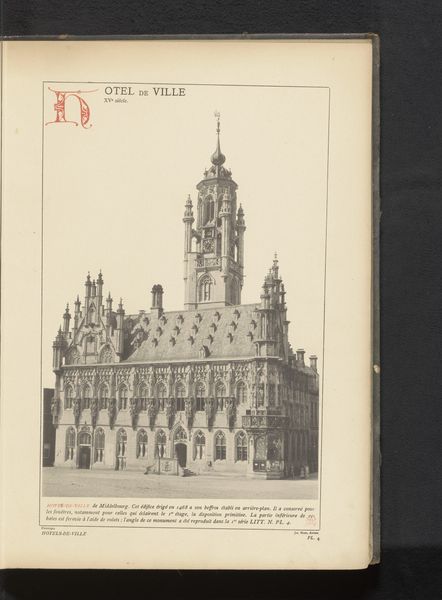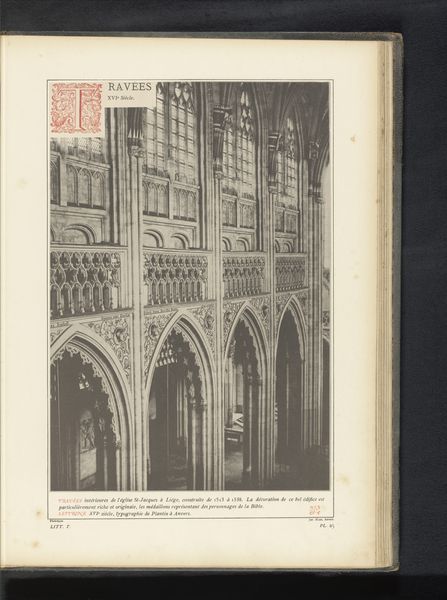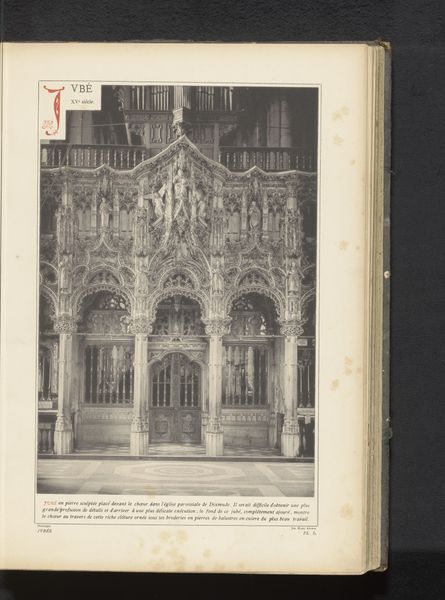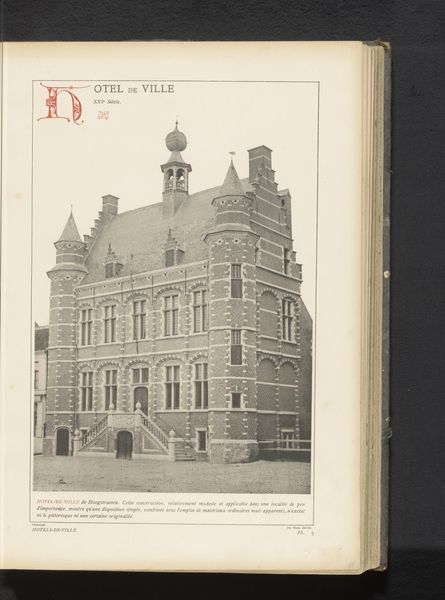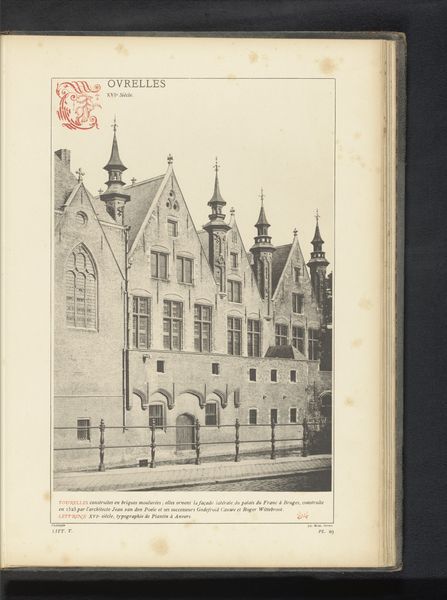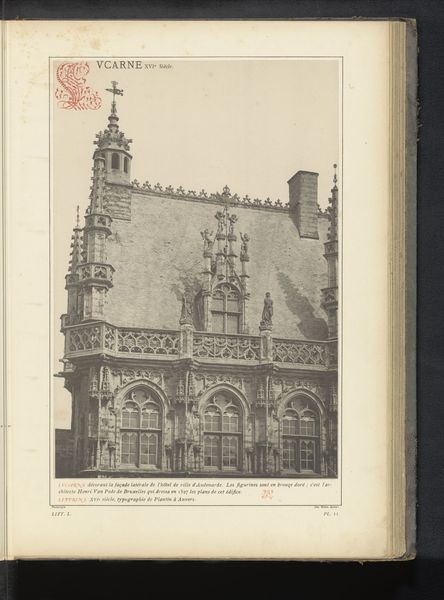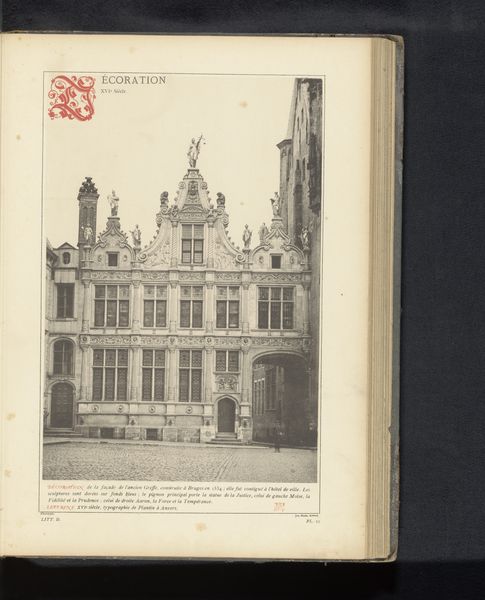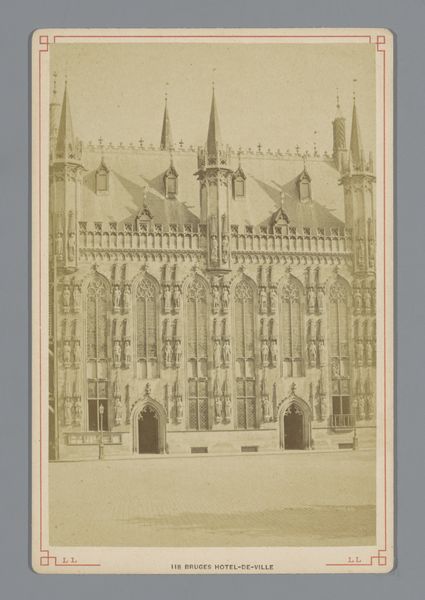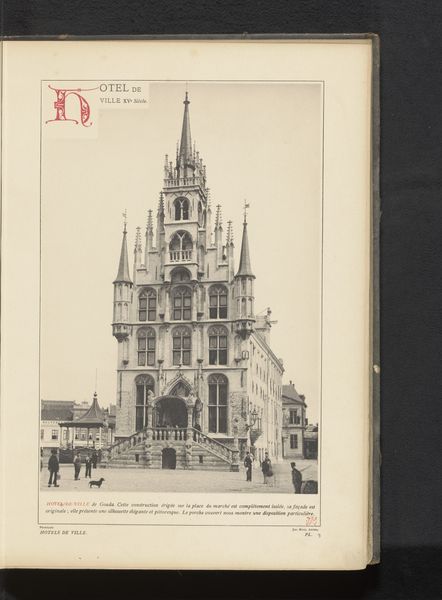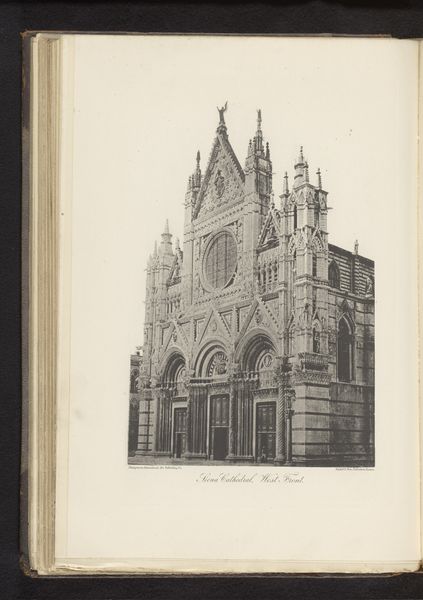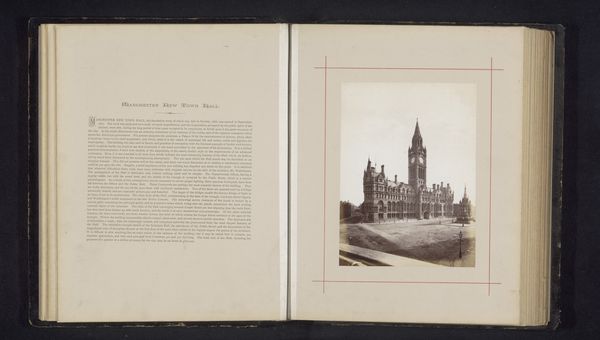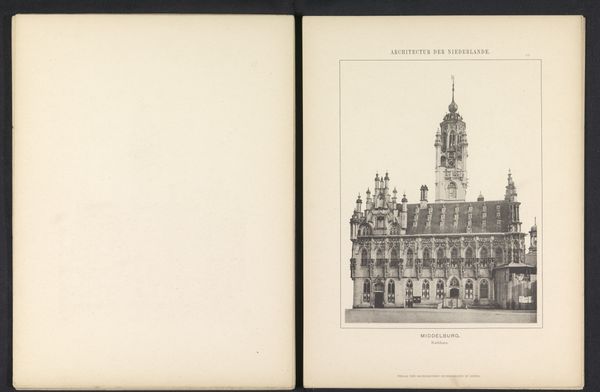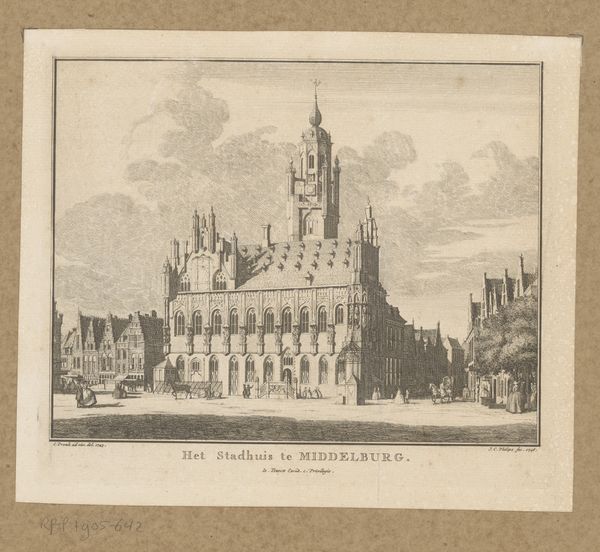
print, photography, collotype, architecture
# print
#
photography
#
collotype
#
cityscape
#
architecture
#
realism
Dimensions: height 340 mm, width 228 mm
Copyright: Rijks Museum: Open Domain
Curator: This collotype print captures the city hall of Bruges, Belgium, sometime before 1887. The stark grayscale gives it a distinctly aged feeling. Editor: Immediately, I’m struck by the density of the architectural detailing, that ornamentation clinging to the structure's surface. It almost obscures the underlying form. Curator: Precisely. Note how the rigid verticals—those long, slender windows and spires—compete with the horizontal stringcourses to fracture the facade. This tension gives it a restless energy, defying the building's grounded stability. Editor: I'm thinking about Bruges itself at this time. Given its history as a wealthy mercantile center, it’s hard not to read this architecture as a deliberate display of civic pride and power projected onto its urban fabric. The intricacy serves as a metaphor for the city's complex political and economic relationships. Curator: That interplay between the city and its image is potent. The play of light and shadow across the ornate Gothic facade softens the harsh edges and provides visual depth, underscoring the print's material qualities too. Editor: And who had access to such representations of Bruges, images shaping perception, promoting tourism? Photography democratized viewing to some extent, yet prints like this reinforced the established power structures through subtle class and nationalistic sentiments. Curator: Intriguing point. However, I remain fixated by the facade's patterned intricacies: the geometry of the windows reflecting sky against the dense carved figures depicting saints or nobles along each tier—a rigorous formal structure despite its perceived busyness. Editor: The print really prompts one to delve deeper into both artistic construction and civic context, doesn’t it? It offers insight into an era when architecture communicated civic identity boldly. Curator: Indeed. Considering this collotype today, its textured surfaces give material form to a city, but in itself becomes part of its history and ongoing life. Editor: Yes, art becomes the medium through which cultural memory continues to evolve.
Comments
No comments
Be the first to comment and join the conversation on the ultimate creative platform.
